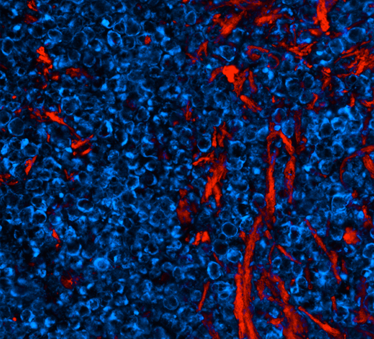Vaccination Innovation
Are vaccines set for a makeover? Two innovative studies from researchers in Massachusetts demonstrate the creative new approaches that R&D scientists are taking to improve the efficacy – and convenience – of vaccination.
At the Forsyth Institute, scientists have developed a new oral system that utilizes the natural bacteria in a patient’s mouth (1). According to Antonio Campos-Neto, Director of the Global Infectious Disease Research Center at the institute, “Commensal non-disease causing oral bacteria are attractive vaccine vector candidates, because they are safe. They are also able to colonize the oral mucosa and they elicit potent mucosal immune responses.”

Campos-Neto and colleagues reported their findings in a recent study where Streptococcus mitis was used as the delivery vehicle for immunization against Mycobacterium tuberculosis. The group generated a recombinant S. mitis (using homologous recombination) that expressed the TB bacteria protein – Ag85b. Tests on animals showed that the vaccine was safe and elicited the production of oral and systemic anti-Ag85b specific IgA and IgG antibodies.
“A major hurdle in oral vaccine development is the delivery system itself. In other words, for a vaccine to induce a good immune response it is important that the components of the vaccine stay at the delivery site for enough time to create a physiological inflammation that will in the end induce the immune response. The delivery system, in our case a delivery vector, is a normal component of the oral microbiota – i.e., a “normal bacteria” that is part of the healthy oral microbial flora. This vector, in contrast to many other delivery systems, stays at the site of its delivery (oral cavity), thus circumventing this issue,” explains Campos-Neto. “One of our goals was to use an efficacious immunization platform that can be used in developing countries.”
Meanwhile at Harvard University, a team has been looking at multidimensional ways to improve on the traditional bolus injected vaccine for applications in cancer and infectious diseases. They have produced a 3D vaccine made up of microsized rod-shaped microparticles that after injection spontaneously assemble in the body to form a defined 3D scaffold. The macropores formed from the stacking of long aspect ratio micro-rods are big enough for immune cells to infiltrate.
“We showed that we could recruit millions of dendritic cells and program them using various molecules we deliver from the material,” says David J. Mooney, one of the authors of the work (2). “A single injection of this technology can elicit serum antigen specific antibody titer that is a magnitude higher than that from traditional bolus vaccines, even after boosting.”
“Moreover, we showed that this vaccine can delay the onset of tumor growth for much longer than traditional bolus vaccination,” adds Aileen Li, a PhD student at Harvard’s School of Engineering and Applied Sciences, who co-led the study alongside Jaeyun Kim, a professor at Sungkyunkwan University in South Korea. “This technology platform is very versatile in terms of material property manipulation and drug delivery. We are excited about its potential in a number of vaccine applications.”
Both projects are in the very early stages. Mooney says that the 3D scaffold vaccine platform is currently being tested on various disease models, while Campos-Neto is looking to test the actual efficacy of the oral vaccine with experiments in non-human primates.
- N. Daifalla et al., “Commensal Streptococcus mitis is a Unique Vector for Oral Mucosal Vaccination”, Microb. Infect. doi:10.1016/j. micinf.2014.11.002 (2014).
- J. Kim et al., “Injectable, Spontaneously Assembling, Inorganic Scaffolds Modulate Immune Cells In Vivo and Increase Vaccine Efficacy”, Nat. Biotech. 33, 64–72 (2015).

Making great scientific magazines isn’t just about delivering knowledge and high quality content; it’s also about packaging these in the right words to ensure that someone is truly inspired by a topic. My passion is ensuring that our authors’ expertise is presented as a seamless and enjoyable reading experience, whether in print, in digital or on social media. I’ve spent fourteen years writing and editing features for scientific and manufacturing publications, and in making this content engaging and accessible without sacrificing its scientific integrity. There is nothing better than a magazine with great content that feels great to read.



















